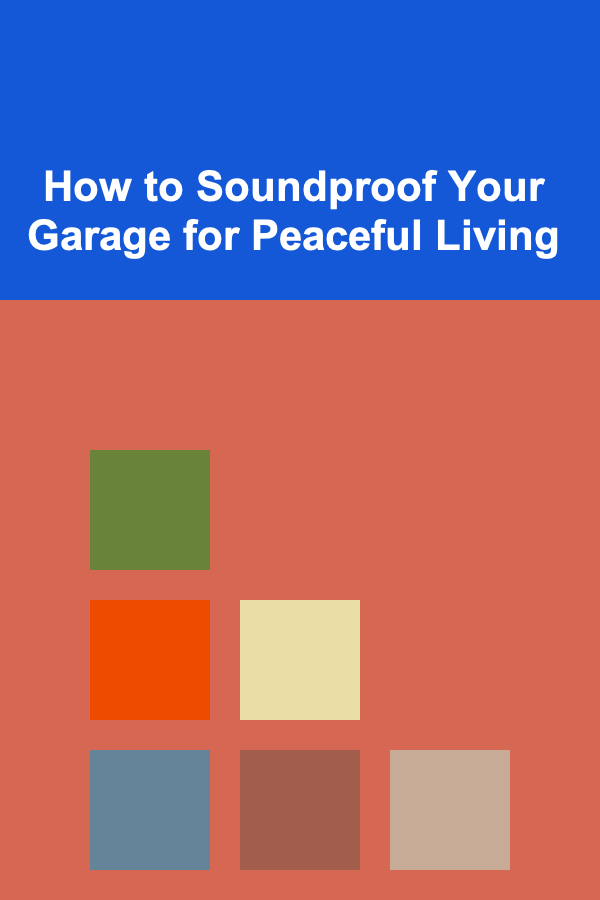
10 Tips for Customizing Printable Masks with Paint and Embellishments
ebook include PDF & Audio bundle (Micro Guide)
$12.99$10.99
Limited Time Offer! Order within the next:
Not available at this time

Customizing printable masks with paint and embellishments is a creative and fun way to add a personal touch to your mask-making project. Whether you're preparing for a costume party, a theatrical performance, or simply looking to express your artistic side, the possibilities are endless when it comes to decorating your masks. This guide will offer 10 essential tips for elevating your printable masks with unique and eye-catching designs.
Choose the Right Mask Material for Painting
When customizing printable masks, the first thing to consider is the material of the mask itself. Printable masks are typically made from paper or cardstock, which are suitable for light paint applications. However, depending on the type of paint you use and the complexity of your design, it's important to ensure that the paper or cardstock is sturdy enough to hold the embellishments and paint.
Materials to Consider:
- Cardstock: A thick, sturdy option that works well with most paints and embellishments. Choose a smooth, high-quality cardstock for the best results.
- Paper: Lighter-weight paper is more delicate, so make sure to apply light layers of paint to avoid warping or tearing.
- Pre-printed Mask Templates: Many printable masks come pre-designed, but you can also create your own templates for added customization.
Ensure that your material can handle the weight of the added elements such as beads, feathers, or gems, which may require more substantial paper or cardstock.
Start with a Solid Base Layer
Before you begin adding intricate designs or embellishments, it's essential to create a solid base layer for your mask. This can be done by painting the mask with a uniform color to serve as a background. The base layer will provide a smooth canvas for the other artistic touches and help your embellishments stand out.
Tips for Base Layer Painting:
- Use Acrylic Paint: Acrylics work well for paper or cardstock masks because they are quick-drying and provide excellent coverage.
- Avoid Overloading the Mask with Paint: Apply thin layers of paint to prevent the paper from becoming too wet and soft.
- Choose Neutral or Bold Colors: Neutral colors like white, black, or beige can serve as an excellent foundation, but bold colors like red, blue, or gold can make your mask stand out more.
A solid base layer will help unify the design and provide a cohesive look when you add the finishing touches.
Use Metallic Paints for a Shiny, Glamorous Look
Metallic paints add a touch of glamour and sophistication to any mask. They can be used to highlight certain areas of the mask, creating a high-impact look without overwhelming the entire design. Metallic paints work particularly well for creating an elegant, opulent mask for a masquerade ball or theatrical performance.
Metallic Paint Application Tips:
- Focus on Highlights: Use metallics sparingly by applying them to the mask's edges, around the eyes, or any other design elements that you want to highlight.
- Layer Over Base Paint: Metallic paints look best when applied over a solid base color like black, white, or dark blue, which helps them pop.
Experiment with gold, silver, copper, or other metallic hues to create a sophisticated, shining effect.
Incorporate Textured Effects Using Modeling Paste
Modeling paste is a great medium for adding texture to your mask. This paste can be molded into different shapes and textures, giving your mask a three-dimensional effect. It's ideal for adding intricate details like raised designs, patterns, or motifs, as well as adding volume to certain areas of the mask.
How to Use Modeling Paste:
- Apply Light Layers: Modeling paste is thick, so it's important to apply it in light layers. Start with a small amount and build it up gradually.
- Create Patterns or Raised Designs: Use tools like stencils, brushes, or your fingers to shape the paste into desired textures.
- Allow Drying Time: Give the paste ample time to dry before painting or adding embellishments to ensure it doesn't shift or lose its shape.
Textured masks with raised designs look striking, especially under lighting, as they create shadows and highlight the artistic craftsmanship.
Add a Pop of Color with Acrylic Paint Markers
Acrylic paint markers are an excellent tool for adding fine details to your mask. They allow you to paint intricate designs, patterns, and accents with precision. These markers are especially useful for painting small elements, such as the edges of the mask, fine lines around the eyes, or even small decorative motifs.
Benefits of Using Acrylic Paint Markers:
- Precision: Acrylic paint markers offer a level of control that brushes may not provide, making them ideal for detailed work.
- No Mess: Unlike traditional paint, markers offer a clean and convenient way to add designs without worrying about brushes or paint spills.
- Variety of Colors: Acrylic markers come in a wide range of colors, including metallic, fluorescent, and pastel options.
These markers are perfect for enhancing areas with fine details and patterns, which will make your mask truly unique.
Incorporate Rhinestones, Gems, and Beads
Rhinestones, beads, and gems are great for adding a touch of sparkle to your mask. These embellishments reflect light and draw attention to key areas of your design, such as the eyes or the edges of the mask. Whether you're going for an extravagant carnival look or a more subtle masquerade vibe, these embellishments will enhance the overall appearance.
Tips for Using Rhinestones and Gems:
- Glue with Precision: Use a strong adhesive designed for paper and embellishments to glue the rhinestones and beads in place. Precision glue pens work well for small items like rhinestones.
- Strategic Placement: Focus on highlighting key areas such as the cheekbones, around the eyes, or the top of the mask. Don't overdo it---sometimes, less is more.
These sparkling additions will give your mask a luxurious and eye-catching appeal.
Experiment with Feathers for a Bold Statement
Feathers are a classic mask embellishment that adds movement and drama to your design. They are especially suitable for Venetian, Mardi Gras, or other elaborate costume events. Feathers can be used to frame the mask, accentuate the eyes, or create a unique texture that contrasts beautifully with painted areas.
Feather Application Tips:
- Use Strong Adhesive: Feathers can be a bit heavy, so you'll need a high-quality adhesive that can hold them securely.
- Cut to Fit: Feathers often come in various shapes and sizes. Cut them to match the shape of your mask and to achieve the desired look.
- Combine with Other Embellishments: Feathers pair wonderfully with rhinestones, beads, and metallic paints for an extravagant and multi-dimensional design.
Feathers add a bold, high-fashion touch, transforming your printable mask into an unforgettable statement piece.
Try Stencils for Intricate Patterns
Using stencils is a fantastic way to create intricate and consistent patterns on your mask. Stencils allow you to add repeating designs such as floral patterns, geometric shapes, or even lacework, without the hassle of hand-painting every detail. They are particularly useful for those who want a refined, professional finish without requiring advanced artistic skills.
How to Use Stencils:
- Choose Simple or Complex Stencils: Depending on your design vision, you can opt for simple patterns like dots and lines or more complex shapes like florals or filigree.
- Use a Stencil Brush or Sponge: Apply paint to the stencil using a brush or sponge, ensuring an even application. Be careful not to let the paint bleed under the edges.
- Remove the Stencil Quickly: Once you've applied the paint, carefully remove the stencil to avoid smudging the design.
Stencils can elevate your mask by giving it a professional, polished look, especially when combined with other embellishments.
Create Contrasting Effects with Matte and Glossy Finishes
To add depth and interest to your mask, consider experimenting with both matte and glossy finishes. Matte paint gives a smooth, non-reflective look, while glossy finishes create a shiny, vibrant surface. These contrasting effects can help highlight different parts of your design, creating a dynamic and visually intriguing mask.
Application Tips:
- Matte Base with Glossy Accents: For a classic look, apply a matte base color to the mask and then use glossy paint or varnish to accentuate specific areas, such as the eyes or design details.
- Layer for Depth: Use layers of matte and glossy finishes to create texture and depth, making certain parts of the mask stand out more than others.
This technique works well for masks where you want to highlight certain areas and create a luxurious or dramatic look.
Seal Your Design with a Protective Finish
Once you've completed your mask design, it's essential to seal it with a protective finish to ensure the longevity of your embellishments and paint. A clear spray varnish or gloss can protect your mask from smudging, fading, and general wear and tear.
Sealing Tips:
- Use a Clear Acrylic Spray: A clear acrylic spray is perfect for sealing your mask. It will not only protect your design but can also add a slight shine to your mask.
- Allow Proper Drying Time: Ensure your mask is completely dry before applying the sealant. Allow the varnish to dry in a well-ventilated area to avoid sticky surfaces.
- Apply Several Coats: If you want extra durability, apply multiple coats of protective finish, ensuring each coat dries before applying the next.
A protective finish will keep your mask looking fresh and vibrant long after you've completed the customization process.

Best Organization Tools for Organizing Your Desk
Read More
How to Analyze Industry Reports for Actionable Market Data
Read More
How to Make a Checklist for Car Battery Maintenance
Read More
How to Maximize Natural Light in Your Home Renovation
Read More
How to Soundproof Your Garage for Peaceful Living
Read More
How To Practice Self-Discipline the Stoic Way
Read MoreOther Products

Best Organization Tools for Organizing Your Desk
Read More
How to Analyze Industry Reports for Actionable Market Data
Read More
How to Make a Checklist for Car Battery Maintenance
Read More
How to Maximize Natural Light in Your Home Renovation
Read More
How to Soundproof Your Garage for Peaceful Living
Read More